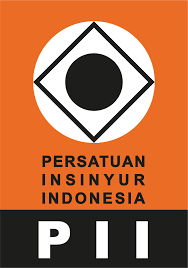| Main Menu |
| Focus and Scope |
| Editorial Team |
| Reviewer |
| Peer Reviewer Process Policy |
| Open Access and Policy |
| Publication Ethics |
| Author Guidelines |
| Plagiarism Screening |
| Copyright Notice |
Publication_Ethics
International Journal Engineering and Applied Technology (IJEAT) is a scientific journal that publishes previously unpublished research results in the fields of Engineering and Applied Technology. This statement of the scientific code of ethics is a statement of the code of ethics of all parties participating in the publication process of this scientific journal, namely administrators, editors, reviewers, and authors. The declaration of the ethical code of scientific publications is based on LIPI head regulation No. 5 of 2014 on the Code of Ethics of Scientific Publications, which primarily defends three ethical standards in publications, namely:
- In the management of publications, neutrality is defined as the absence of conflicts of interest.
- justice, which is to grant the right of authorship to those who are entitled to it.
- Honesty in publishing that is devoid of duplication, fabrication, falsification, and plagiarism (DF2P).
Editor-in-Chief Duties and Responsibilities
- When necessary, determine the journal's name, scientific scope, scale, and accreditation.
- Determine the editor's membership.
- Defines the relationship between publishers, editors, reviewers, and others.
- Recognize the importance of confidentiality for contributing researchers, authors/writers, editors, and reviewers.
- Apply rules and provisions for intellectual property rights, particularly copyright.
- Examine the journal policies and communicate them to authors, editors, reviewers, and readers.
- Create behavioral code rules for editors and reviewers.
- Publish journals on a constant schedule.
- Assuring the availability of financial sources for the long-term viability of journal articles.
- Creating a network of collaboration and marketing.
- Improve the quality of the journal.
- Prepare permissions and other legal aspects.
- The Editor-in-Chief's decision is final on the basis of the submitted article.
Editor's duties and responsibilities
- The editor makes comments on the author's writing so that the reader understands what the author is trying to convey, either through remarks written on the manuscript or discussion options on the journal website.
- The editor provides feedback on the author's work in a language that follows the journal's standard.
- The editor attempts to increase the quality of publications sustainably.
- The editor prefers free expression objectively.
- Where necessary, the editor provides changes, explanations, withdrawals, and apologies.
- If the author's writing is slightly controversial, the editor verifies that it does not concern SARA or anything that could affect the publisher and coordinates the author's writing with the publisher's editor-in-chief.
- The editor receives, investigates, and follows up on complaints from all parties involved in the journal's publication.
- The editor supports activities that educate scholars on publication ethics.
- The Editor does not defend his own beliefs, writers, or third parties, which may result in an unobjective conclusion.
- The editor encourages the author / authors to improve the work until it is worthy of publication.
- The editor makes the layout of the manuscript to be published so that it fits the journal template.
- The editor-in-chief works closely with the editor-in-chief to finalize a collection of manuscripts before they are printed and published, particularly in terms of language, format, and layout.
Duties and Responsibilities of Reviewers
- Provide impartial and impartial written feedback on the importance of science and the contribution of the manuscript to the advancement of science.
- Indicate whether the screenwriting is clear, complete, and relevant, as well as whether the article is relevant to the scope of the journal.
- Personal criticism or comments should not be made.
- Maintain the manuscript confidentially by not discussing it with unrelated individuals or releasing the material included in the text to others.
Duties and Responsibilities of the Author
- Ascertain that those included in the list of authors have met the authorship criteria.
- The collaborative responsibility for the work and content of the paper includes methodologies, analysis, computations, and details.
- Identify the source of resources (including finance), either directly or indirectly.
- Explicitly stating the research's shortcomings.
- Respond to comments from reviewers and editorial boards/editors in a scientific and timely manner.
- Avoid superfluous and unrelated discussions with the editor about enhancing the quality of the work.
- Declare that the written material submitted for publication is original, has never been published anywhere or in any language, and is not in the process of being submitted to another publisher.
- Submit a manuscript that was written following the author's instructions.
Duties and Responsibilities of Website Administrators
The website administrator is the person in charge of managing the journal's website. The website administrator's specific responsibilities are as follows:
- Set up a web journal;
- configure system options and manage user accounts;
- registering for editors, reviewers, and authors;
- manage the features of the journal;
- view the report statistics; and
- upload/publish a paper that has accepted status.







